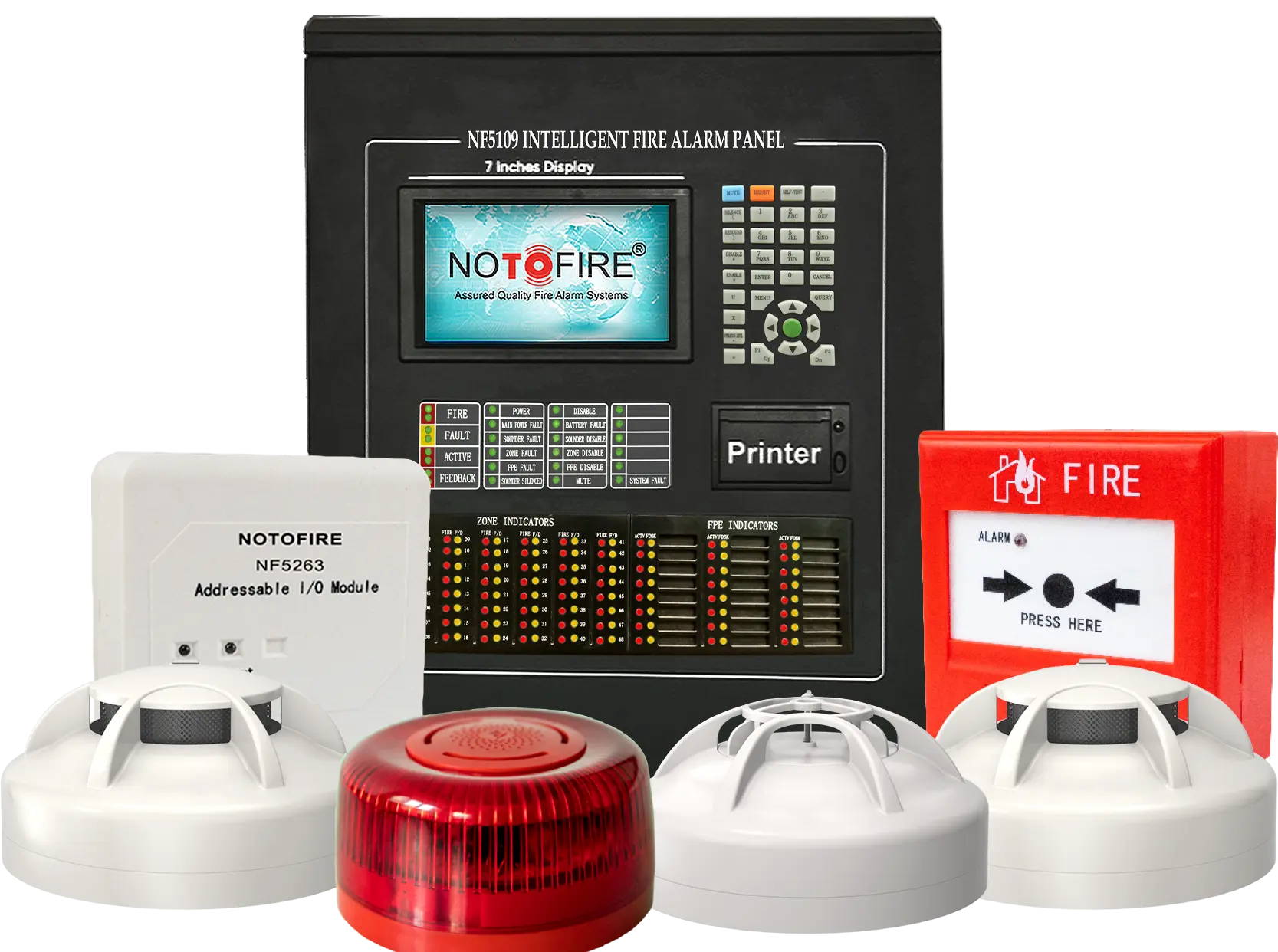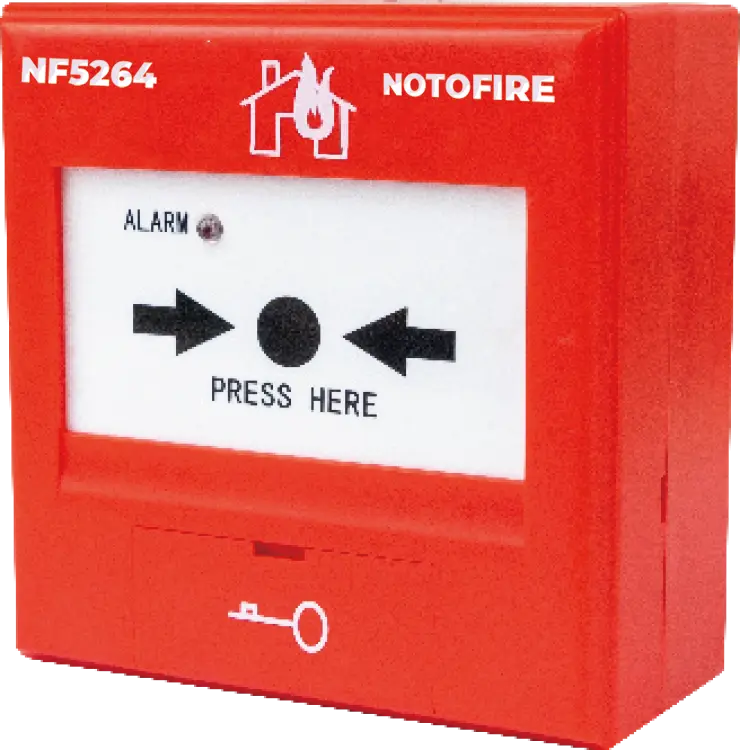Fire Alarms System, are one of the best ways to safeguard your homes or offices, we can consider them as a non-human bodyguard. No showpiece or prop can be compared to safety. Purchasing any fire alarm system can be hectic and stressful, cause of no knowledge regarding the same.
Contacting or discussing with several people can be stressful as well as confusing. Several brands and companies are available in the market that manufactures fire alarm systems.
There are many things that you have to keep in mind while dealing with fire alarms or purchasing one. Here in this article, you’ll get to know everything regarding fire alarm system, what components fire alarms have, what you need to ensure in fire alarm systems and how fire alarms system works.
Fire Alarm System Overview
Fire alarm system device uses audio and visual signals to create alert about fire danger, carbon monoxide, or smoke presence in the atmosphere.
Fire alarms are mainly for life and property safety purposes, these alarms are set in fire alarm systems. Whenever any mishappening occurs in a building or premises, fire alarms create an alert in form of a sound, hooter, beep, flash, or a loud siren/bell. There are some high-tech fire alarms also, which uses additional warning signals like making call or voice messages.
In terms of the value that fire alarm systems provide to the user, as well as the integrated components that are included in these systems, there are several types of fire alarm systems:
- Automatic fire alarm systems are activated through fire detectors, such as smoke or heat sensors. Manual fire alarms are activated with manual call points or pull stations. There is no reason for a fire alarm system to exclude one or the other. Both can be included in the same system.
- Conventional fire alarms do not specify the exact location, where the tragedy has taken place. They work as one unit, until and unless the accident is inspected.
- Other than conventional fire alarms, addressable fire alarms are the one, which specifies the exact location and create an alert for the mishap. These addressable fire alarms have a dedicated address id for each fire alarm detector, connected to the control panel to identify danger.
- Fire alarm systems are divided into two parts, one-stage fire alarm system just creates an alert that an alarm or sensor has been activated. The two-stage fire alarm system is usually created only for those who are authorized to take action and aims to avoid panic.
Purchasing fire alarm systems can be challenging, first, you need to identify your needs, number of fire alarms you need, and where you want to place them. Your needs can be any, every time you should go for a fire alarm system that can work smoothly with your current security system.
Always go for those fire alarm systems that include some important features like- a hush button, and a backup battery, it’s just to improve the usability of the fire alarm system. Whenever you are uncertain about whether or not a specific feature of a fire alarm system will suit your needs, it is always a good idea to contact the support team of the vendor concerned.
It’s a suggestion to contact the fire department if you have any inch of confusion, do not ever feel hesitate in asking for any help or advice from fire experts regarding relevant codes and regulations. Before choosing and sticking to any fire alarm, you must compare all the fire alarms system available in the market.
You can compare all the fire alarm systems available in the market based o their pricing, functioning, quality, and reliability. Go for online reviews, explore YouTube, and ask your families, friends, and colleagues.
Major components of Fire Alarms systems
Conventional fire alarm systems consist of the following devices to detect fires:
1. Fire Alarm Panel
2. Detectors and bases
3. Call points
4. Sounders and Flashers
5. Power supply accessories (fire alarm batteries)
The fire alarm panel is a basic as well as the most important component in whole fire alarm systems, as it receives the signal from its detectors and then creates an alert and makes people aware of the tragedy.
Fire alarms’ other important components are their detectors, which are smoke detectors, heat detectors, carbon monoxide detectors, and a combination of multiple types of detectors. There are even advanced sensors that are capable of detecting radiation.
Manually controlled fire alarm systems have call points or pull points, which are used to activate the system. Indeed, most residential properties do not use these appliances, but many business establishments still use them. Sounders emit a loud siren signal. To give visual warnings, flashers are designed to emit intermittent or rotating flashes of light (typically red or white in color).
How does a Fire Alarm system work?
Modern fire alarm systems detect the occurrence of any activity that may result in a fire. Detectors and alarms work with each other. The fire alarm system receives signals from its detectors and then the alarm creates an alert in form of a beep, hooter, flash, voice message, etc.
The signal that fire alarm systems receive, Thermistors are often used in heat detectors to detect heat. Integrated chemical, electrochemical, Opto-chemical, or biomimetic cells are used in carbon monoxide detectors. Smoke detectors detect smoke or combustion particles by using photoelectricity or ionization. There are several detection mechanisms used in combined detectors.
Whenever fire alarm systems detect or recognize the signal of threat, it immediately activates their flashes, sounders, hooters, and sprinklers, or in some cases, the fire alarm system just sends a message or voice note to the authority. If there are multiple floors in a building, then signals can vary according to the floor, this can be horns, gongs, and loudspeakers.
The most advanced fire alarms on the market have the following features:
These contemporary fire alarm systems are built and designed differently with strong resistance and durability. So that these fire alarms can be placed in difficult-to-reach areas, and can guide people to escape from danger. These modern fire alarm systems are built to perform some other automatic tasks like releasing fire suppressing systems, and water sprinklers, and creating notifications to protect valuable electronics.
There are many fire alarm system manufacturers available in the market having different features and USPs but don’t get yourself into any confusion, For instance, fire alarm systems by ‘No to fire’ comes with an intuitive 7-inch color LCD. 1-4 loops and 48 zone expandable panels, 1020 devices can be connected with 255 devices in each loop. These fire alarms are compiled with the requirement of LPCB and EN 54 standards. Fire alarm systems by no to fire are easily networkable and have Panel programming with customized display options. The company is ISO, and RDSO approved and has LPCB and CE certifications. Always opt for brands with such certifications and approvals.
What you ought to look for in a fire alarm system-
- Capacity: Fire alarm system capable of covering all the important zones of the premise with recommended number and combination of detectors and devices. In case the premise is small and doesn’t require a hefty budget, a conventional fire alarm system may suffice. But if the premise is large and occupied by a large number of residents, then you must always pick an intelligent addressable fire alarm system.
- Approvals: Fire Alarm Systems are life-saving equipment. On the contrary, a faulty or unreliable fire alarm system can be a life-threatening piece of equipment. As such there are several standards and parameters upon which a fire alarm system must be built. A good tell-tale sign of a reliable fire alarm system is that it should be tested and approved by a prominent organization and based on industry-followed standards like LPCB, UL, EN54, and more.
- There are some additional features also that you must count when purchasing any fire alarm system. Such as input/output, input-output, battery backup, loop isolation system, fault detection system, on-panel programming, ease of configuration, mobile notification systems, and compatibility with advanced devices such as aspirating smoke detection system, combustible gas detection system, etc., should also be considered depending on the nature of the application.

Why Choose Notofire Fire Alarm Systems?
Notofire manufactures top-quality fire alarm systems in the market. Notofire fire alarm systems come with a 1-year extendable warranty with a fireproof metal body. these fire alarm systems have 255~1020 addressable points; 1~4 Loops; up to 48 zones.
These Fire Alarm systems come with a 7-inch color LCD display that's intuitive to use. There can be up to 1020 devices connected in 1-4 loops and 48 zones on expandable panels, with 255 devices in each loop. The fire alarms meet the requirements of LPCB and EN 54. Panel programming and customized display options are available on Notofire fire alarm systems. With ISO, RDSO, and LPCB certifications, the company complies with all regulations.
To buy these Certified Fire alarm systems visit us and contact us by filling the form!
































